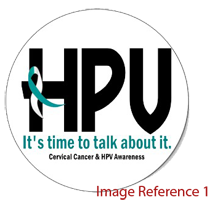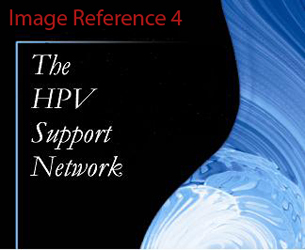Human Papillomarvirus (HPV)
 Human Papillomarvirus, HPV for short, is a sexually transmitted infection that can cause genital warts and can lead to cervical cancer (Public Health Agency of Canada, 2012). There are more than 100 different types of HPV and while most of them are harmless, about 30 of the strains place you at risk for cancer (Medline , 2012). It is estimated that approximately 75% of all people will have at least one HPV infection at some point of their lives. Fortunately, those with healthy immune systems will naturally clear the infection out of their systems in most cases and only a small portion of infections will develop into cancer (Health Canada, 2010).
Human Papillomarvirus, HPV for short, is a sexually transmitted infection that can cause genital warts and can lead to cervical cancer (Public Health Agency of Canada, 2012). There are more than 100 different types of HPV and while most of them are harmless, about 30 of the strains place you at risk for cancer (Medline , 2012). It is estimated that approximately 75% of all people will have at least one HPV infection at some point of their lives. Fortunately, those with healthy immune systems will naturally clear the infection out of their systems in most cases and only a small portion of infections will develop into cancer (Health Canada, 2010).
How Can I Get HPV
HPV is transmitted is most commonly passed through genital contact, typically during sex. It can be passed through oral sex or genital-to-genital contact. The infection can be passed even if no symptoms are showing and it is possible to be infected with more than one type of HPV at a time. In some rare circumstances, the infection can be passed to a baby during delivery (CDC, 2012).
HPV Facts
Prevention
 There are two vaccines currently available for HPV, Gardasil (for men and women) and Cervarix (for women only). Both vaccines have been deemed safe by Health Canada and few side effects of the vaccines have been reported (Health Canada, 2010).
There are two vaccines currently available for HPV, Gardasil (for men and women) and Cervarix (for women only). Both vaccines have been deemed safe by Health Canada and few side effects of the vaccines have been reported (Health Canada, 2010). Aside from vaccination, lowering your risk of contracting HPV is similar to other sexually transmitted infections by practicing safe sex through use of condoms, limiting your sexual partners, ensure all partners are undergoing regular screenings, and ensuring proper cleaning of all toys that may have come in contact with an infected area (CDC, 2012).
Community Connections & Links
http://www.arhp.org/hpv-tool/http://www.hpvsupport.com/phpBB3/
http://www.dailystrength.org/c/HPV/support-group
http://forums.webmd.com/3/sexual-conditions-and-stds-exchange/forum/4992
Article References
CDC. (2012). Genital HPV Infection - Fact Sheet. Retrieved 11 13, 2012, from Centeres for Disease Control and Prevention: http://www.cdc.gov/std/hpv/stdfact-hpv.htm
Health Canada. (2010, 09 08). Human Papillomavirus (HPV). Retrieved 11 13, 2012, from Health Canada: http://www.hc-sc.gc.ca/hl-vs/iyh-vsv/diseases-maladies/hpv-vph-eng.php
Medline . (2012, 11 08). HPV. Retrieved 11 13, 2012, from Medline Plus: http://www.nlm.nih.gov/medlineplus/hpv.html
Planned Parenthood of America. (2012). Human Papillomavirus (HPV). Retrieved 11 13, 2012, from Planned Parenthood: http://www.plannedparenthood.org/health-topics/stds-hiv-safer-sex/hpv-4272.htm
Public Health Agency of Canada. (2012, 09 25). HPV. Retrieved 11 13, 2012, from Public Health Agency of Canada: http://www.phac-aspc.gc.ca/publicat/std-mts/hpv-eng.php
Image References
Someone else's art deserves recognition! The images presented in this article were borrowed from the following places:
Header Image: https://michellepetersen76.files.wordpress.com/2014/08/blood-and-saliva-tests-help-predict-return-of-hpv-linked-oral-cancers-healthinnovations.jpg | Retrieved May 4, 2015
Image 1: http://rlv.zcache.com/hpv_awareness_1_stickers-p217339235796060596envb3_400.jpg | Retrieved November 13, 2012
Image 4: http://vulvakarzinom-shg.de/board/attachment.php?s=f31290c3b01536275cf2baa65862bbb6&attachmentid=1874&d=1317813893 | Retrieved November 13, 2012